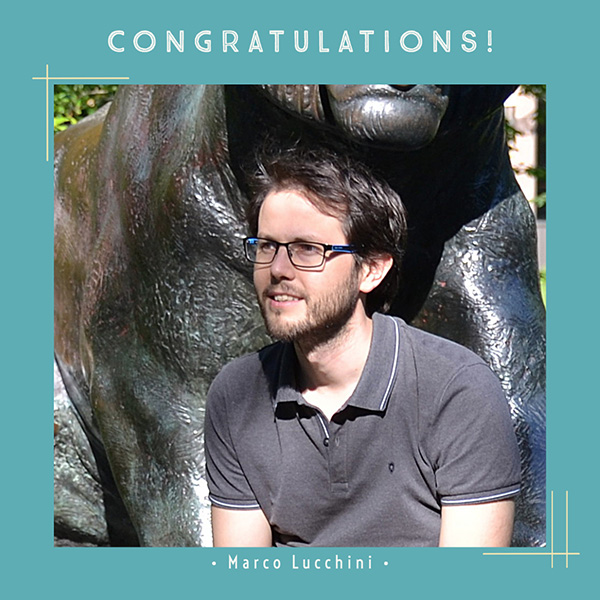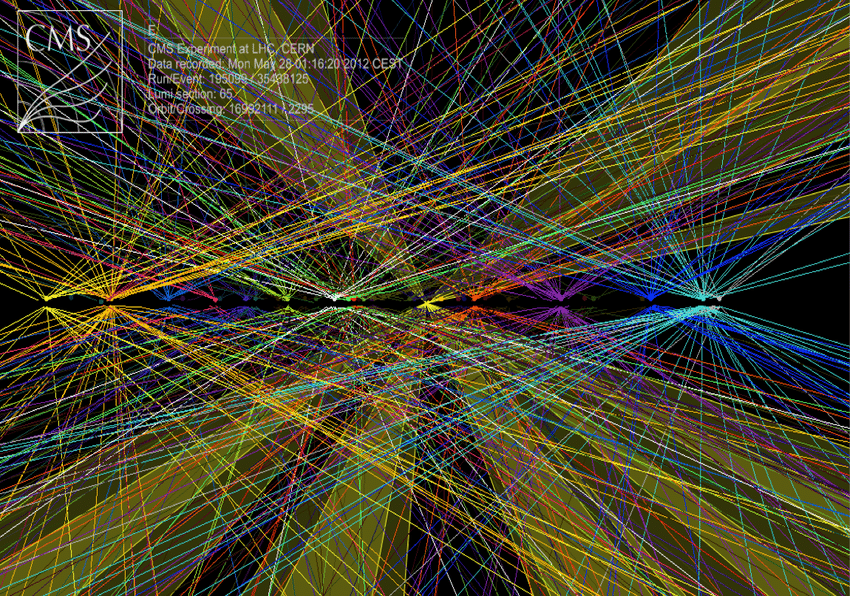
IUPAP Young Scientist Prize 2020
The International Union of Pure and Applied Physics (IUPAP) commission honoured CMS member Marco Lucchini with the Young Scientist Prize for 2020, “For his pioneering work in the development of fast crystal sensors for the precision timing of charged particles”. The award aims to recognize young scientists nominated by the international community. This year, the prize will be awarded at the International Conference for High Energy Physics (ICHEP).
We present to you Marco and his research.
Marco Lucchini - Princeton University
My name is Marco Lucchini and I am a postdoctoral research associate at Princeton University.
I graduated at the university of Milano-Bicocca in 2014 and worked as a CERN fellow from 2015 to 2018. I have been part of the CMS collaboration for almost 10 years.
Attracted by the challenges of particle detectors at collider experiments, I have been working since the beginning on the upgrade of the CMS experiment in view of the High Luminosity LHC running.
This new phase of the LHC operation will be challenging all existing detector technologies and calls for an upgrade of the LHC experiments to fully exploit the potential of the accelerator in discovering new physics beyond the Standard Model. The key upgrade of the accelerator will also be the greatest challenge for the detectors: luminosity.
Increasing the luminosity of the collider (the frequency of proton collisions) will enable the detectors to collect data up to 7 times faster, but this will require the capability to disentangle the multitude of particles originating from about 200 simultaneous proton-proton interactions and will increase radiation damage of the detector components.

A collision event recorded by the CMS detector with particle tracks originating from multiple proton-proton interaction. The growing number of interaction vertices (pileup) will be one of the major challenges for the detectors at the High Luminosity LHC.
Imagine that every second there are billions of proton collisions where each collision generates a bunch of secondary particles flying off to the detectors. Consider taking a photograph with a long exposure time, in the resulting picture you would just see an intricate tangle of particle trajectories very hard to decipher.
To be able to correctly associate each of these particles to its vertex of origin, one way is to take a series of very fast snapshots and look at them one by one. The faster the snapshot the simpler the picture and the easier it will be to disentangle the particles.
I have been working on designing a novel detector for the CMS Upgrade capable of measuring all charged particles (specifically, Minimum Ionising Particles - MIPs) with a time resolution at the level of 30 picoseconds (where a picosecond is one trillionth of a second) that would bring back the complexity of the collision snapshot at High Luminosity LHC to the level of the current LHC.
One of the technologies we developed and optimized to build such a MiP Timing Detector (MTD) exploits small scintillating crystals which emit visible light at the passage of a particle. This light is then measured with Silicon Photomultipliers (SiPM), that act like tiny photo cameras.
One of the most fascinating aspects of developing innovative technologies at CERN is the interdisciplinarity of our research which can lead to an impact on society beyond the specific goals of the CERN research programme.
The idea to use crystals and SiPM technology for a timing detector in CMS finds its roots in a similar application in the medical imaging domain (Time of Flight Positron Emission Tomography) for cancer screening. Part of the hardware development we performed for the CMS MTD will have potential feedback impact in the field of medical imaging in what emerges to be a loop of reciprocal knowledge transfer.
You can find more info about the Mip Timing Detector here
The Leonardo da Vinci-style illustration on the cover of the MTD Technical Design Report by Sergio Cittolin.

